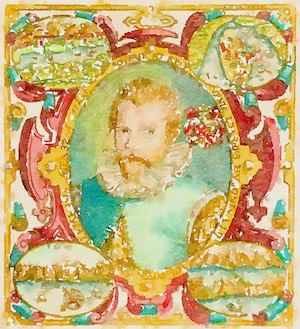
Dutch traveller, merchant, trader and propagandist Jan Huygen van Linschoten (1563 – 1611) is best known for his description of Asian trade routes (Itinerario 1596, published in English as Discours of Voyages into Ye East & West Indies).
Van Linschoten was the son of a Haarlem public notary. The family moved to Enkhuizen when he was young. As a teenager, Van Linschoten worked with his older brother Willem, a merchant based in Seville, then moved to Lisbon in 1580 to work with another merchant.
Willem's acquaintance with the newly appointed Archbishop of Goa, D. Frei João Vicente da Fonseca, secured his little brother a position as the Archbishop's secretary.
Van Linschoten sailed for Goa in April 1583, arriving five months later. During his six years in the Portuguese East Indies, he travelled extensively. He recorded his observations in a diary, amassing a significant body of helpful information. His position also gave him access to privileged information that the Portuguese had previously kept secret.
During his stay in Goa, he copied secret charts, collated details about trade and commerce and used his cartographic skills to produce new maps reproducing nautical and mercantile data.
The Archbishop was travelling alone when he died on a voyage to Lisbon in 1587. Although the death ended van Linschoten's employment in the Indies, he did not leave Goa until January 1589. During a stop at St. Helena in May, he met Gerrit van Afhuijsen, who was making his way back to Europe from Malacca and provided details of the spice trade.
An English blockade kept him in the Azores for two years, and he eventually reached Lisbon in January 1592. He spent his time in the Azores mapping Angra on the islnd of Terceira for governor Juan de Urbina. After six months in Lisbon, he left for his homeland in July 1592 and settled in Enkhuizen.